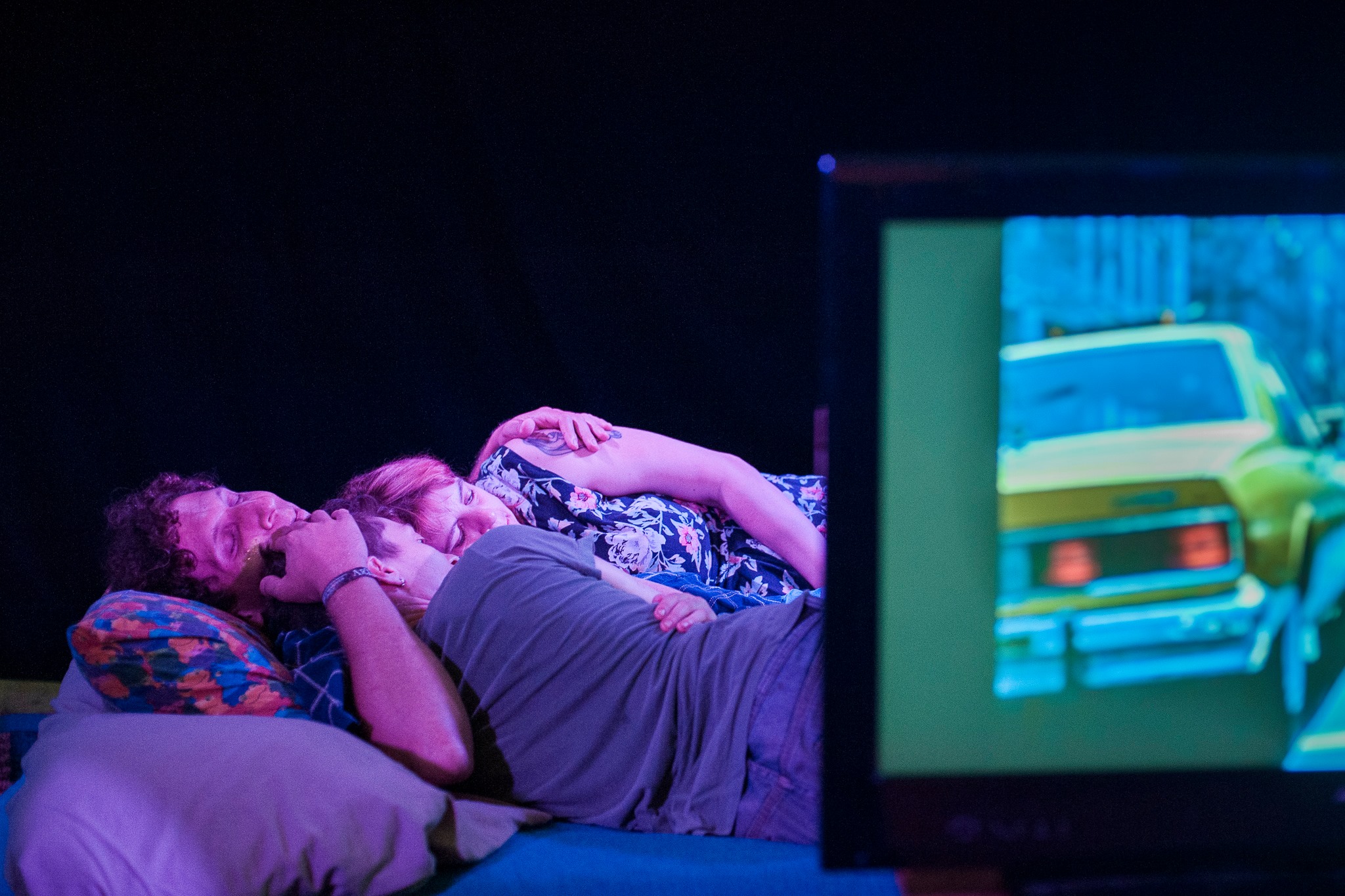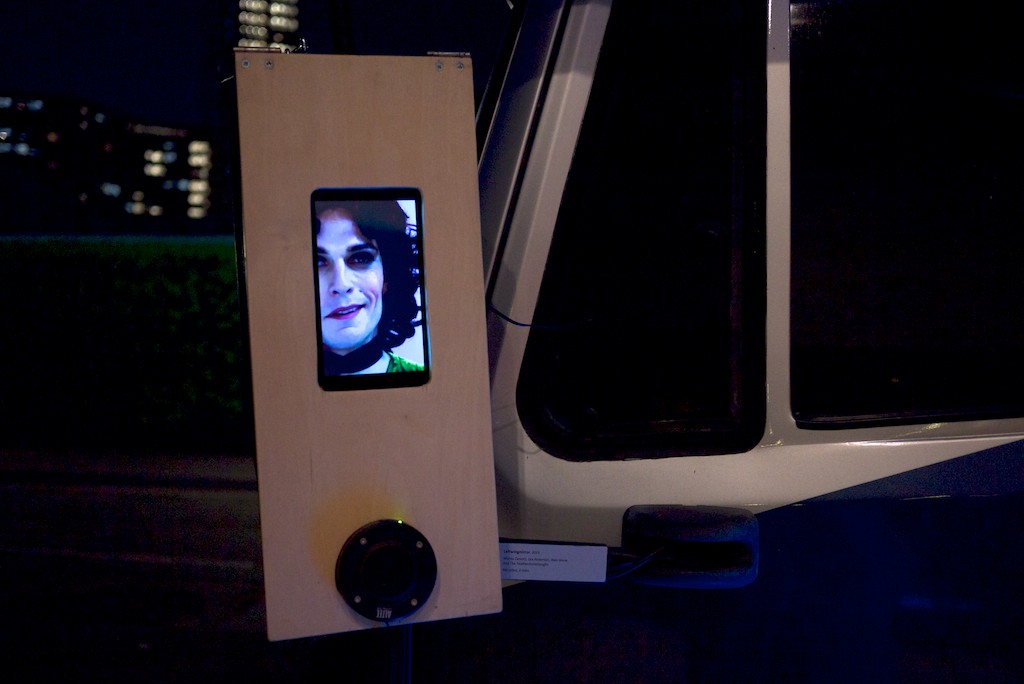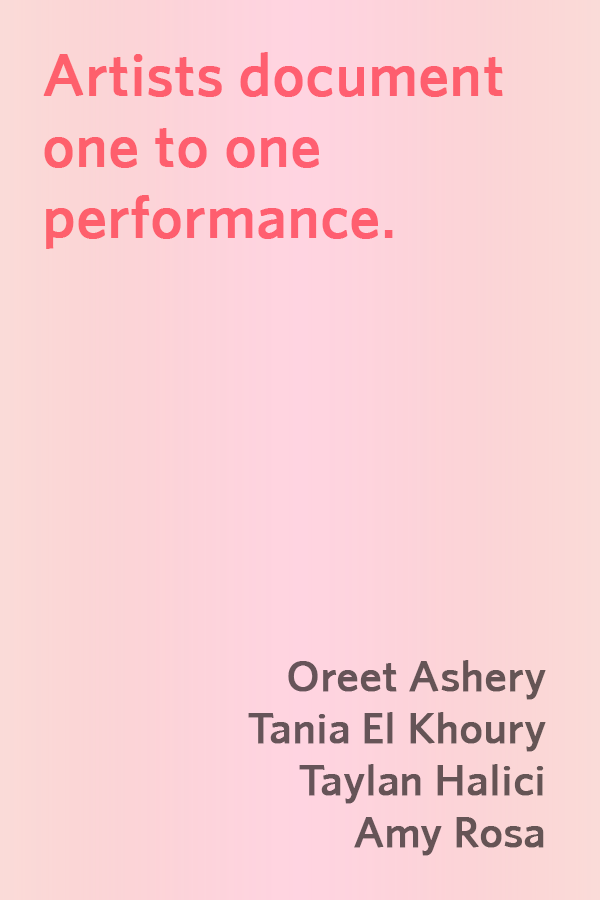Introduction
Documenting Intimacy is a research initiative piloted by Brian Lobel and Marisa Zanotti to explore documenting one-to-one performance from the perspective of artists. The Live Art Development Agency (LADA) was invited to be a commissioning and publishing partner on the project and Alex Eisenberg (LADA) has produced the website.
Project Statement
We initiated a research process by asking a community of artists about their experiences with one-to-one performance and the pressures, both artistically and professionally, to document performance, and to document performance well. A number of questions arose which informed our initial conversations. These questions included:
Does documenting, in a traditional sense, interrupt the intimacy which one-to-one performance often promises as its unique quality? What innovative methods can be used to capture a multitude of audience experiences? Does anyone really care about documentation or what remains after the performance? Is it purely an economic or professional pressure which demands this documentation? Can documentation be an integral piece of the performance-making process?
We put these question to four different artists chosen because of the specific propositions that their work invites in relation to documentation: Oreet Ashery, Tania El Khoury, Taylan Halici and Amy Rosa. Without asking the contributors to create documentation as a direct answer to the questions, we instead asked them simply to create a document of a singular piece of their one-to-one practice. The openness of this prompt, allowed them to take the idea of documentation in whatever way felt most natural and exciting for them as artists.
Amy Rosa’s work demonstrates probably the most clear example of documentation of a performance which, while it becomes an art work in its own right, attempts to recreate/represent or, as the artist writes, ‘captures’ some of the magic of the ephemeral performance, of both the audience and performer’s experience.
Images of performance itself are completely absent from the documentation of both Taylan Halici and Tania El Khoury, who document their work through the memory of the people intimately connected with the performances. Halici, as his documentation of Friends of Friends, presents the reflections of anonymous audience members for whom he performed whilst blindfolded.
In 2009, El Khoury created Fuzzy, a one-to-one performance in which audience members provided advice to Tania about her relationship. The piece is here documented through her ex-partner’s memories of the piece and, particularly, what it felt like to be the subject of his partner’s one-to-one performance.
Oreet Ashery’s work looks at documentation in, yet again, another way, with Ashery reconfiguring ideas of both ‘performance’ and ‘intimacy’ to look critically and creatively at her own archive.
The documentation created through these commissions, we hope, will be both useful to their practice and to ours, as researchers and artists who care about artistic methodologies and how these affect audience reception. We noticed the continuing emergence of some common themes and questions, amongst which are:
- The relationship/tension/correlation between documentation as a performance or artistic strategy, and documentation as a commercial strategy or necessity, for example, the promotion of a work or artist, fundings bids, etc. What strategies can be put into place to allow a document to have many functions?
- The difficulty with capturing the experiences of multiple audience members who, because of the dialogical and relational nature of much one-to-one performance, may each experience a very different piece. If documentation is – as some consider it – an attempt to capture the performance in the service of sharing the work with people not present, how are all of these experiences captured? Is there such a thing as an ‘average’ or typical version of a one-to-one?
- How about documentation that does not try to ‘capture’ a performance? How do the documents created by artists become spaces to extend performances and interactions, to develop the discourse in the work?
- The legacy of a one-to-one: is it most impactful on the audience member, the performer or to those who access the documentation in an archive or online? Can these legacies speak to each other in a way which is meaningful and dialogical?
- What are the possibilities in one-to-one performance for exploring the relationship between the documenter and the performer and audience?
- It has never been so easy to access a variety of technologies for documenting performance, nor easier to find platforms to stage the resulting documentation. However, just because documentation is being made, doesn’t necessarily mean it is being made accessible. What is the role of format, design and site in documentation?
Brian Lobel and Marisa Zanotti
Personal reflections
As academics and artists, we both feel very strongly about conducting research which relates to and feeds back into our artistic practice. To this end, we both thought it necessary to share a bit of reflection from how we are thinking about documenting our own intimate performance practice. Two short reflections from our own practice are below:
Brian Lobel

Brian Lobel – You Have to Forgive Me. Image: Carys Levin
In preparation for “You Have to Forgive Me, You Have to Forgive Me, You Have To Forgive Me”, I ask audience members to complete a survey, based on every question asked by Carrie on Sex & The City. After they arrive to the space, we put on pyjamas, lie in bed and, having reviewed their survey responses, I diagnose them with an episode of SATC to watch while cuddling.
Documentation of a single session would fail to capture the multitude of performance variations. It would also be supremely boring as, for 30 of 45 minutes together, we are simply watching tv. Most importantly, however, documentation would make the interaction more precious – as if it was worth documenting – whereas the performance is meant to replicate the real-life occasion of lazing around and watching tv with friends.
But I want to remember these interactions and the time I’ve dedicated to cuddling and speaking to others about their relationships – and after over 100 performances, I necessarily forget most of the details of each performance.
Perhaps the ideal documentation of the piece would be a heartbeat reading, capturing whether they tensed up when talking about sex. Or perhaps a collection of the tissues from the great number of people who cried. Or a follow-up interview to see how their love life has changed.
My current documentation for this performance has become a collection of the surveys which, although it might not capture fully what we experienced, has a heft of hundreds of pages. These provide me a memento of the people I have been in bed with, the issues that have been raised. Their handwriting and humour leave an indelible impression on the page, and when I flip through them and begin to remember, I am thankful for this little glimpse into what happened between us.
Marisa Zanotti

leftwingmirror. Image: Ole Bratt Birkeland
In my moving image practice in adapting and directing I am often seeking to create an intimate encounter with an audience. This might be through the drive of a plot and/or the use of ideas of embodied spectatorship, proposing that a viewer engage with a film through the senses beyond simply sight and hearing. Sometimes I imagine that the film is sentient, that it has a kind of consciousness that creates another possibility of intimate exchange with a viewer.
leftwingmirror is a work created for the left wing mirror of a stationary van for one viewer. Looking in on Lea Anderson’s all-male company, The Featherstonehaughs, a viewer sees that they are trapped in a tiny, unrelenting show. I have chosen this image by Ole Blatt Burkland because the photograph speaks to the intensity of colours in the film and the insistence of the looped sound score leaking out from tiny speakers. The documentation reminds me of the clarity of the cold nights on which leftwingmirror was shown and the close-up viewing point from which the dancers look out beguiling, ordering and then begging for a release from a gaze. The image speaks to my interest in working specifically for screening rooms, cinemas and walls, and in how spatial context also creates cultural content.
Of course this single image also reminds me that I have very little ‘evidence’ of screenings of my work. While I document process, I rarely document a finished work – there is a sense where a film might be thought of as its own document, although of course thinking in this way only addresses one of the possibilities of a documentation. Maybe what this project reveals to me is that not-documenting is also a process, that if a work is not documented, it might go through the process of being remembered in many ways before it disappears.
Contact
You can contact us to find out more about the project by emailing Brian Lobel here.
Live Art Development Agency – www.thisisliveart.co.uk
University of Chichester – www.chi.ac.uk
Arts Council England – www.artscouncil.org.uk

